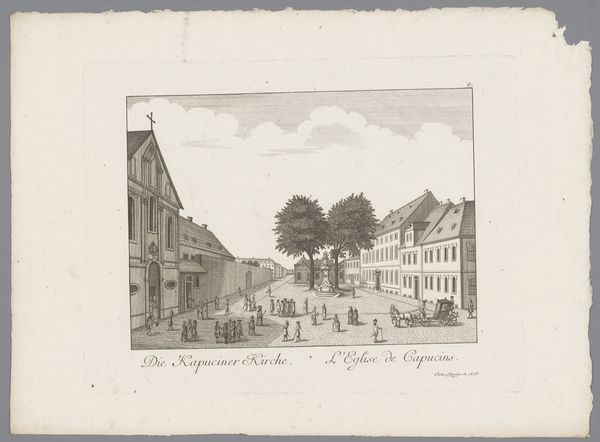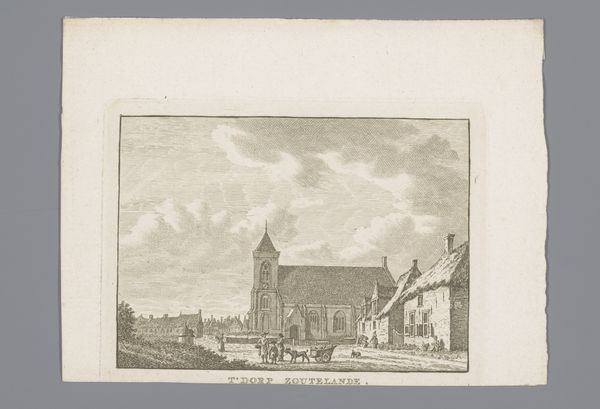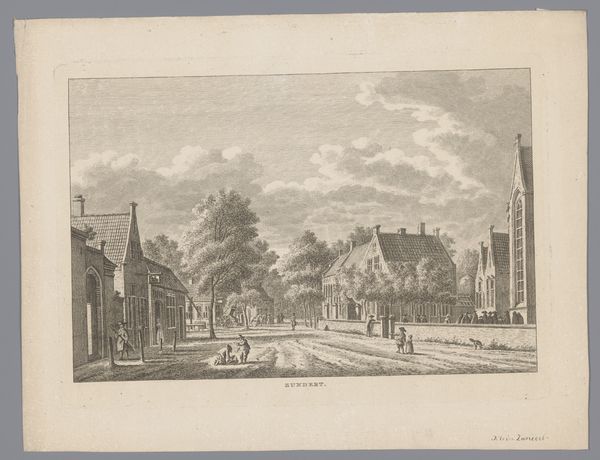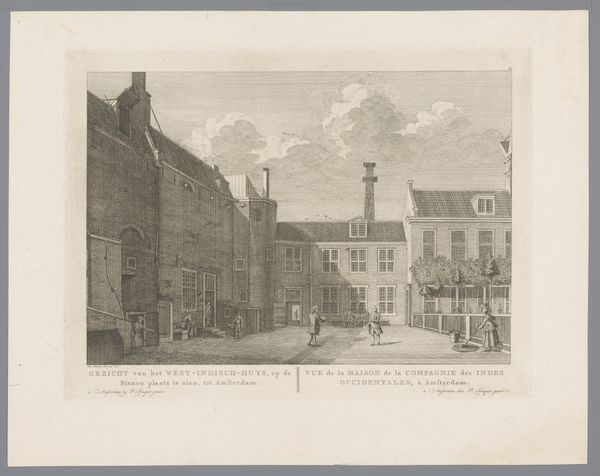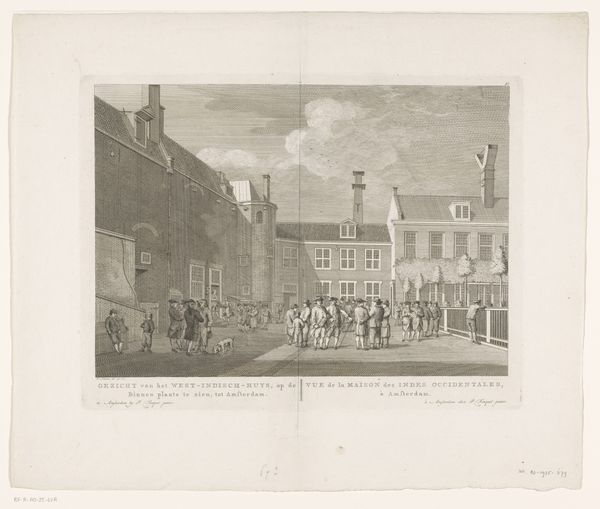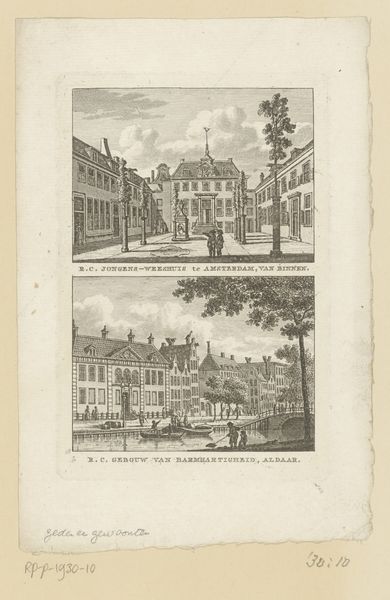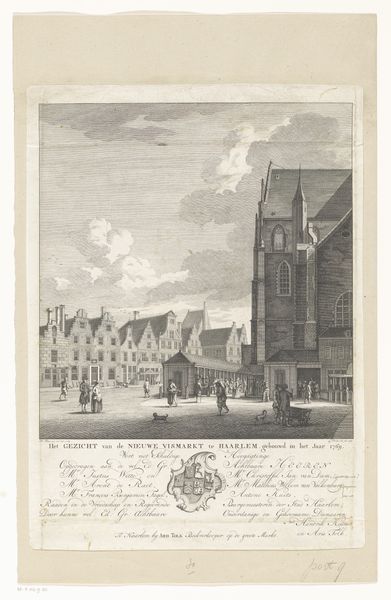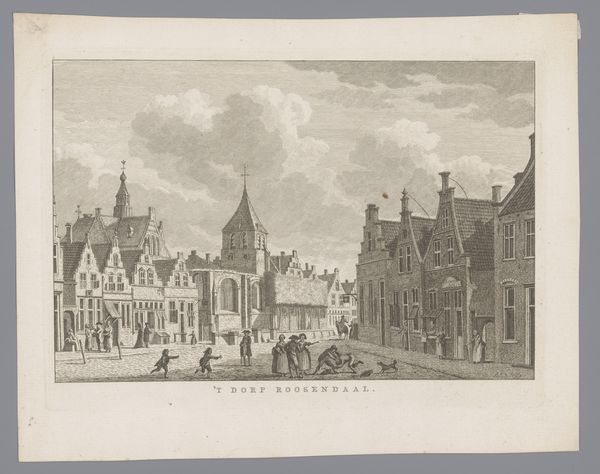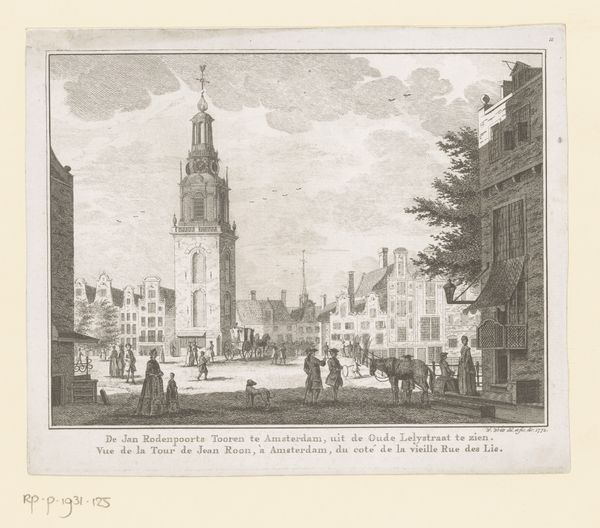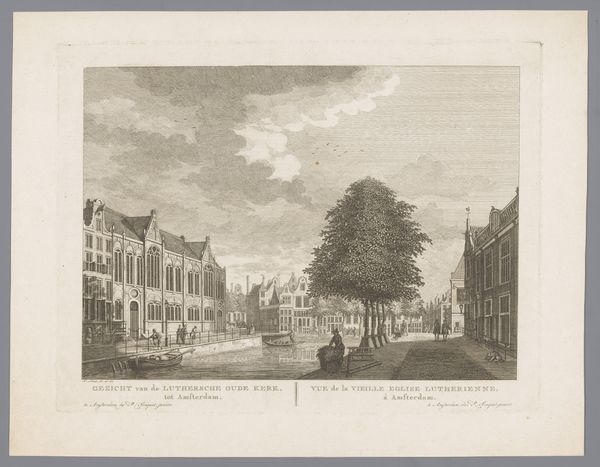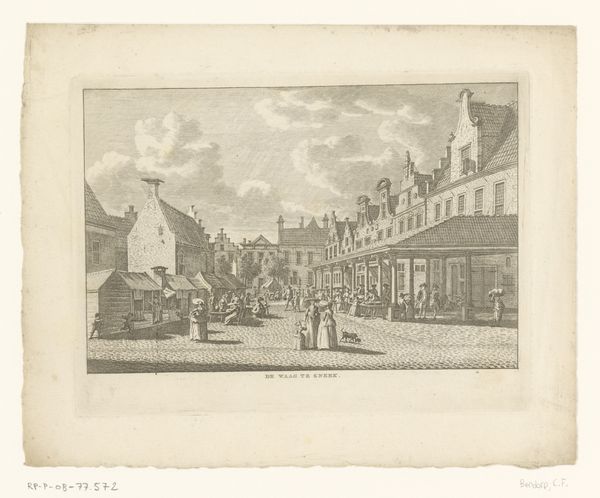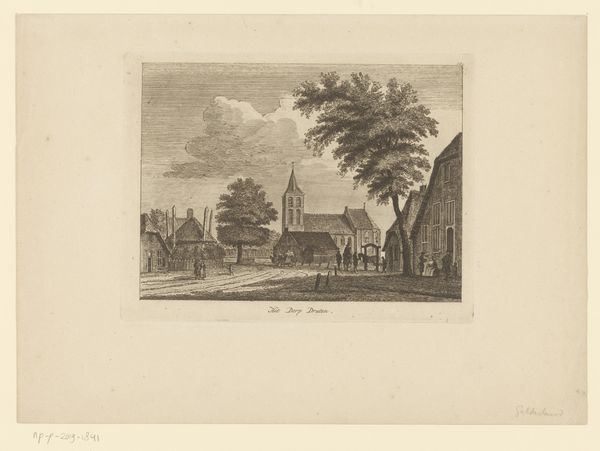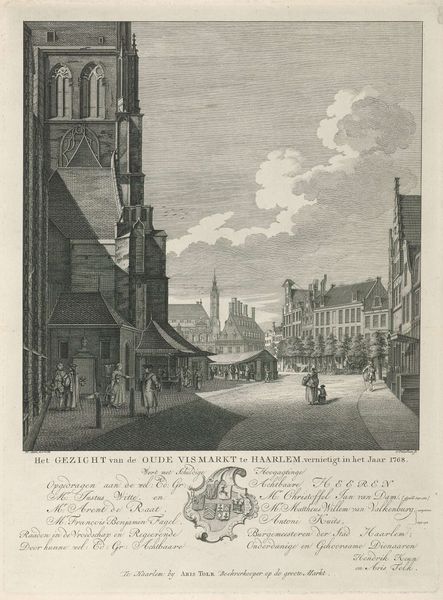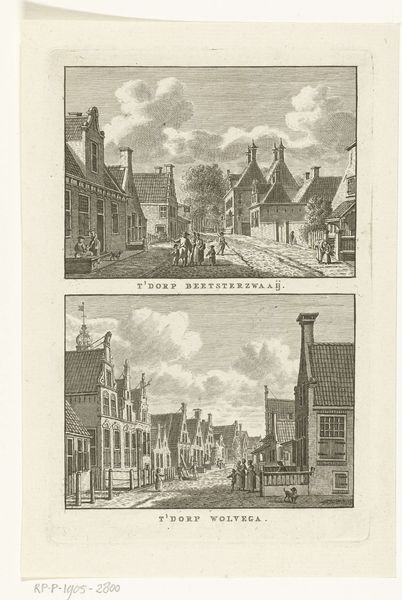
print, etching, engraving
dutch-golden-age
etching
landscape
etching
cityscape
engraving
Dimensions: height 83 mm, width 102 mm
Copyright: Rijks Museum: Open Domain
Editor: This etching, titled "Gezicht op Ouwerkerk, 1745", is by Hendrik Spilman and probably dates between 1754 and 1792. I'm struck by the detailed depiction of this quiet village street. What symbolic readings can we take from such a seemingly simple image? Curator: Consider the steeple dominating the village. The church, as a central visual element, often represents spiritual life and community stability. Think about the historical context: The Dutch Golden Age, even in its twilight, valued order and piety. Does the steeple represent an aspiration towards higher ideals, a connection to something beyond the immediate, material world? Editor: That makes sense, especially placing it within its historical context. What about the people? They seem very deliberately placed, though not particularly individualized. Curator: Exactly. Notice the groupings of figures, their postures and placement. Do they represent an idealized social harmony? Or perhaps Spilman is capturing a moment in time, embedding societal values into the landscape. This is not just about architecture; it is about cultural memory, passed down through these visual symbols. Do you see anything that disrupts that harmony? Editor: I suppose the lack of expressive faces contributes to that sense of generalized representation rather than a specific story. And I don’t see any disruption, so harmony it is! I had not considered the church as such a potent symbol, but now I see it shaping the narrative. Curator: It's all about recognizing how even seemingly straightforward images embed complex cultural codes, transmitting values across generations. So, what is our collective cultural memory of the Netherlands based on this picture? Editor: A place rooted in community, with the church at its heart – both literally and figuratively. It offers a snapshot, frozen in time, brimming with symbolic value.
Comments
No comments
Be the first to comment and join the conversation on the ultimate creative platform.
